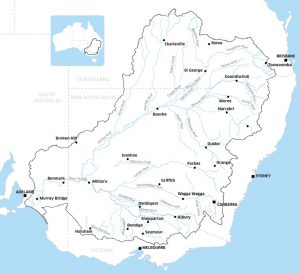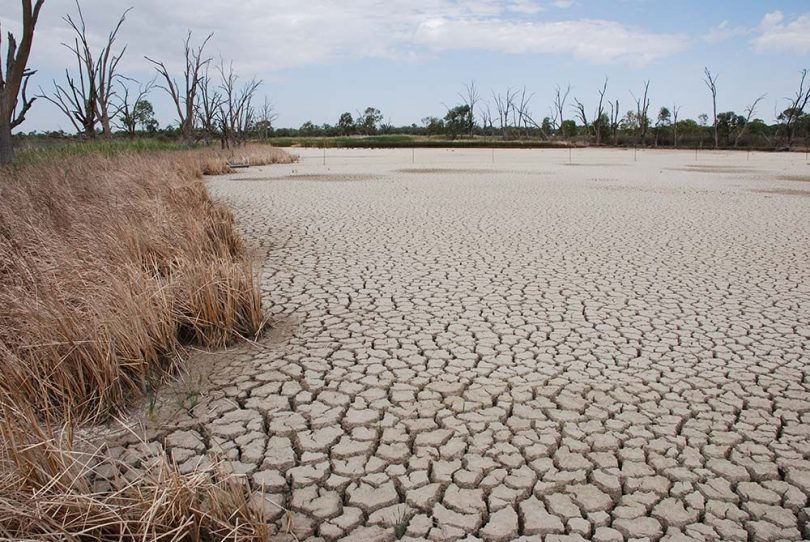Significant cuts in water allocation, increase in water prices and numerous mass fish deaths this past summer has compounded the stress on Australian farmers.
This caused unrest amongst farmers who use the Murray-Darling, Murrumbidgee and Darling Rivers for irrigation purposes as they believe there not getting a fair deal from the Federal Government.
The past few years has seen human use of waterways for industry, agriculture and urban lead to a decline in the health of the Murray Darling Basin.
The lack of communication between stakeholders and local communities has seen the problem intensify.
Farmers began to question how the Murray-Darling was being managed after former Nationals leader Barnaby Joyce’s $80m deal he approved in 2017 as Water Minister, which has come under much public scrutiny since.
The company who received the payment, Eastern Australia Agriculture (EAA), booked a $52m profit on the deal, much of which appears to have been transferred to its parent company in the Cayman Islands.
Local communities around the Murray wanted answers to where all the money and water went too as they were struggling to cope with the ongoing drought.
They never got a response.

Map showing the Murray, Darling and Murrumbidgee Rivers. (Photo: Murray-Basin Authority)
Bernie Pinnuck, a second-generation rice farmer from Jerilderie has had his water allocation for the Murray Darling slashed entirely.
Pinnuck’s 10,000-acre farm is located just a mere 50-minute drive down to the Murray Darling river, which makes it all so difficult as the water is there though he can’t use it as he simply can’t afford it.

The decade long drought has made farming very difficult with paddocks turning lifeless. December 10th, 2017. (Photo: Sophie Pinnuck)
“For our farm we have 7% allocation for the Murrumbidgee and zero allocation for the Murray, where in previous years we have had a substantial amount of allocation for both rivers,” Pinnuck said.
“This is the first time in 10-12 or so years that we haven’t had any water allocation for the Murray so it obviously makes it harder for our crops like wheat and canola to yield well and make a profit for the year.”
It’s just not the cropping that will be hurt by the zero percent water allocation, as Pinnuck’s livestock will be at a detriment also,
“It’s pretty tough on the sheep as we usually green feed them on pasture for six-eight weeks between February and late March though they are still on the feed now and it’s nearly halfway through May.”
Pinnuck is used to irrigating his property for pasture for his crossbred sheep; however, this year after the allocations came out he had to change his plan for the winter season.

Cross-bred sheep in a drought stricken paddock with no green pasture in sight. January 18th, 2019. (Photo: Sophie Pinnuck)
“Mate, basically no water means no irrigation. It’s as simple as that.”
Pinnuck is not alone in having his water allocations cut entirely with many other farmers around his area experiencing the same fate.
Water prices have risen 25% in the past 12 months making it impossible for many farmers to afford to put in cropping, which is where on a good year they make their money.
The water charges are fixed, which means farmers pay the charges even if they don’t get any water due to the drought.

A gully full after more than an inch of rain fell within 12 hours. July 22nd, 2016. (Sophie Pinnuck)
Drought stricken paddock
No Description
(Video: Sophie Pinnuck)
As seen in the above video, the paddocks are desolate where if Pinnuck had access to the Murray he would be able to put in cropping and buy more livestock.
More than 2.6 million Australian call the Murray-Darling Basin home, hence, why this issue needs to be addressed now.
Farmers like Pinnuck understand the territories that come with farming though they haven’t heard from the government since the water prices skyrocketed and the mass fish deaths over the summer.
Australians have been horrified by the impact of the drought on the Murray-Darling Basin, our biggest river system, with millions of fish suffocating in rivers and dams.
A Facebook video of two farmers standing in the Darling River in Menindee holding dying 80- year-old Cod went viral in January of this year.
A toxic blue-green algae outbreak that robs the water of oxygen killed up to a million fish in the river in mid-January.
This was the second such incident in a couple of weeks in Menindee, which is located in far northwestern New South Wales.
The news revived the years-long debate over water management across the Murray-Darling Basin.
The lack of water flowing into the northern rivers and the impact of many years of over-allocation of precious water resources throughout the entire basin were at the centre of the debate.
Fish farmer Jonathan Condon believes the fresh water is paramount to the survival of Murray Cod.
“If there isn’t enough water or fresh water in rivers and dams then fish populations will die.”
Condon runs a 1500-acre fish, grape, sheep, cropping farm 20km south of Griffith, New South Wales and relies on irrigation as the drought continues.
This past January Condon lost approximately 32,000 Murray Cod in January due to a lack of oxygen due to the heat, “It was the week of 40 plus degree heat and that increased the water temperature and killed the fish,” he said.
Fish kills
No Description
(Video: Jonathan Condon)
Condon alluded to the thoughts of many regarding the Basin Plan,
“The Basin Plan isn’t working. The government bought so much water they can’t manage it. They’re sending environment water down the river at the wrong time and amount, which causes erosion of river banks.”
Like Pinnuck, Condon said he hasn’t heard from stakeholders regarding the increase,
“We’ve had no communication on fish deaths or water prices.”
“The government now has bought back about 20% of water allocations for the environment. They should make some of that available during droughts for farmers to grow food staples like rice, vegetables and wheat,” Condon said.
When asked whether his farm’s case was similar to Menindee, Condon said no but could see similarities.
“What happened up there in Menindee and here showcases that low oxygen water and rise in temperatures in weather have a huge effect on fish and fish populations.”
Dead fish
No Description
(Photos: James Cusack)
The fish deaths events, along with low water availability and drought conditions, continue to have a significant impact to the local communities.
The panel found collaboration with key stakeholders (water scientists, academics, local communities) and management of water for the environment would work best to manage the Basin more productively.
According to the panel managing water quality in the Murray-Darling can be done in four steps according to the researchers.
Improving farming systems and salt interception schemes, managing blue-green algae blooms locally, connecting floodplains to reduce black water and improved nutrient management practices.
The Murray-Darling is the heart and soul of rural eastern Australia and its mismanagement has hurt local communities and farmers considerably.
Farmers like Bernie Pinnuck and Jonathan Condon reaffirm their stance action needs to start from stakeholders.
Something has got to change.

